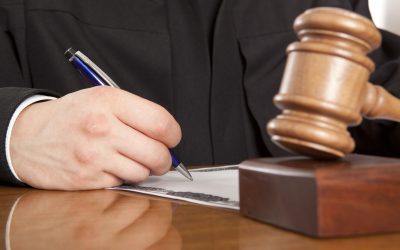For decades, the issue of cameras in the courtroom has been highly controversial. In fact, Federal Rule of Criminal Procedure 53, enacted in 1946, states, “Except as otherwise provided by a statute or these rules, the court must not permit the taking of photographs in the courtroom during judicial proceedings or the broadcasting of judicial proceedings from the courtroom.” This rule was developed even before there were telecasters or broadcasters or many newspapers! Today, many courts permit photography and videography, despite Rule 53. They claim that no rights are violated, the defendant still receives a fair trial, and that each court should be able to make its own decision. Both sides of the debate are discussed below.
Argument 1: Videography Should Not Be Permitted
The top reasons for this particular viewpoint are as follows:
• The dignity and respect for the judicial system may be undermined if the courtroom is used as a form of entertainment. Also, people may not agree with the decision of the court and may grow to resent it.
• Extra time and resources are needed to administer and oversee the broadcasting, which can be taxing on the court.
• Juries may watch the televised version of the trial instead of focusing on the trial itself, which could skew their views, distract them from actual proceedings, and make them subject to the bias of the media.
• Videography could have psychological effects on jurors, judges, witnesses, and lawyers, especially video that is emotionally disturbing or especially graphic.
• The press could use video to pressure judges to rule a certain way, especially judges that are elected into their position and are thus more impressionable.
Argument 2: Videography Should Be Permitted
• If critical witnesses are unable to attend court, then video conferencing could be used to enable them to still give their testimony.
• The public understands little about its country’s judicial system and would become more educated on its procedures through televised trials. Furthermore, the increased transparency of government would be highly appreciated by the people.
• When witnesses are emotional or have a speech impediment, it may be very difficult to hear them. By video recording the trial, a court reporter can listen to the video several times in order to capture all words for a more complete, accurate transcript of the trial.
• Technology is able to transform boring depositions into intriguing events. The viewer can be provided with a multi-perspective experience as the camera pans from the witness box, to the jury, to the lawyers.
Neither side of the debate seems to necessarily be “right” or “wrong.” Either way, videography continues to become integrated into court cases. Whether your seek videographers in Annapolis or Miami or Chicago, make sure that they are professionally trained for the courtroom, as litigation support services require a specific skillset.
Are you looking for quality videographers in Annapolis or the surrounding area? Business Name specializes in litigation support. Visit website url or call Phone No for more information.
